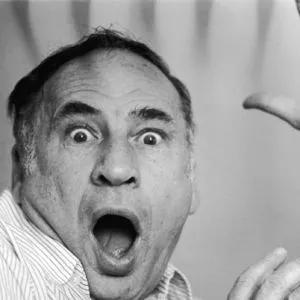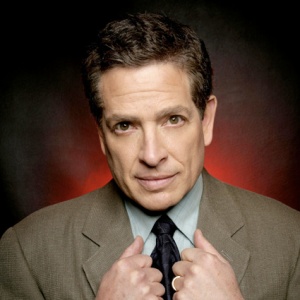The Woody Allen Parody: 1966-1973
Woody Allen’s 1966 directorial debut, What’s Up, Tiger Lily? revived the parody genre after decades of little attention following the many films of Abbot and Costello. Prior to the film’s release, Allen was primarily known for his work as a comedy writer, his off-beat stand-up and his writing/acting debut in What’s New Pussycat? in 1965. With the release of What’s Up, Tiger Lily? Allen’s name and humor was thrust into the mainstream. A parody of spy thrillers, the film consists of footage of a Japanese spy film titled International Secret Police: Key of Keys, redubbed by Allen and his friends. The entire plot is changed from a straightforward spy film to an unrelated comedy about the main character’s search for a stolen egg salad recipe. A lot of the comedy resembles what would later be seen in some of Allen’s most outlandish films, such as Bananas and Sleeper, the latter arguably being a science-fiction parody.
Before those films came, however, Allen was featured as Jimmy Bond (James Bond’s nephew) in a 1967 comedy adaptation of Ian Fleming’s spy novel Casino Royale. While not well-received, the film was a financial success and is well-known today for its troubled production and large ensemble cast.
Allen’s work in parodies came to a peak (and an end) with the 1973 release of Sleeper, a film about a man frozen in the present and woken up 200 years in an unfamiliar future. Although the film is an original story and does not directly parody any specific films (and Allen himself has stated that the film is mainly a tribute to comedians Groucho Marx and Bob Hope) , it is widely considered to be a parody of sci-fi films, with its monochrome future and dictatorship police state full of comical gadgets, inept robot butlers and pretentious, vapid humans (Lax).
The following scene showcases the tone of Sleeper, featuring Allen stealing (and killing a man with) genetically modified food for Diane Keaton’s character:
Sleeper is widely considered to be one of his best films, and exemplifies both his brand of humor and that of the parody genre well (The Guardian).
The Mel Brooks Parody: 1974-1995
Having already earned high praise (and an Oscar for best original screenplay) for The Producers in 1968, comedian and filmmaker Mel Brooks started in 1974 what would become a string of successful films parodying different genres, beginning with the Hollywood Western in Blazing Saddles. Starring Gene Wilder and Cleavon Little (in a role originally intended for Richard Pryor, who co-wrote the film), the film tackles racial tensions in not only the American Old West, but also in present-day Hollywood. The film features unflinching usage of the “n”-word, several deliberate anachronisms and various slapstick gags and was nominated for several Academy Awards and BAFTAS. In 2006, Blazing Saddles was selected for preservation in the National Film Registry after being deemed “culturally, historically, or aesthetically significant”.
Directly following Blazing Saddles in the same year, Brooks once again collaborated with Gene Wilder with Young Frankenstein. Perhaps his most highly regarded film, Young Frankenstein parodies classic monster movies of the early 20th century. Among the film’s strongest assets was its eccentric characters played by its ensemble cast, including Wilder, Marty Feldman as Igor, Peter Boyle as the monster, and Cloris Leachman as Frau Blücher, seen in the following scene:
As with Blazing Saddles, Young Frankenstein was nominated for multiple Academy Awards, Golden Globes and other awards, and won various Hugo and Saturn Awards, proving Brooks’ staying power when it came to the parody film. Years later, Young Frankenstein has been featured in many “best comedies of all time” list, including the American Film Institute’s 100 Funniest American Movies Of All Time at number 13 (afi).
Brooks continued to explore spoofing different genres, and in 1976 and ’77 released Silent Movie and High Anxiety, respectively. Silent Movie parodies classic silent films of the Chaplin-Keaton era. In Mel Brooks: Make a Noise, Brooks expresses being blindsided by the difficult task of making a silent film. As a comedian known for his verbal, effective language, Brooks said, “[I]t proved very difficult, because in the middle of making this silent movie I said ‘Oh! No sound! I can get rid of the boom! I’m so free! I don’t have to worry about, you know. Later I just put some title cards.’ And I was in a morass, I was in quicksand” (Mel Brooks: Make a Noise). The risk pulled off, however, and Silent Movie was highly successful, and is among Brooks’ best-reviewed films.
For High Anxiety, Brooks wanted to parody suspense films, specifically those of Alfred Hitchcock. According to Brooks, he said of Hitchcock, “[Y]ou, sir, are an entire genre” (Mel Brooks: Make a Noise). Hitchcock was somewhat involved in the film’s development, and highly approved of the film. After the film was released, Hitchcock reportedly sent Brooks a case of wine with the note, “A small token of my pleasure, have no anxiety about this” (Parish). High Anxiety, while not as well-received as his prior films, still earned positive critical reviews.
The beginning of the 1980s began the decline in Brooks’ success with parodies, beginning with History of the World, Part I in 1981. The film, which spoofs historical epics, and features Brooks portraying various historical figures in five segments: The Stone Age, The Old Testament, The Roman Empire, The Spanish Inquisition and The French Revolution. While receiving generally positive reviews, the general critical consensus was much more lukewarm especially considering Brooks’ previous successes. The critical attitude towards History of the World, Part I can be summed up by the opening paragraph of Roger Ebert’s January 1981 review, which also seems to foreshadow what was to come for parody films of the 21st century:
Mel Brooks’s movie “History of the World, Part 1” is a rambling, undisciplined, sometimes embarrassing failure from one of the most gifted comic filmmakers around. What went wrong? Brooks never seems to have a clear idea of the rationale of his movie, so there’s no confident narrative impetus to carry it along. His “history” framework doesn’t have an approach or point of view; it’s basically just a laundry-line for whatever gags he can hang on it. (Ebert)
Six years later, Brooks released Spaceballs, the Star Wars parody, and effectively fell out of critical favor. The critical consensus was that the film came ten years too late, and that by 1987 people were tired of Star Wars spoofs. His two films that followed, 1993’s Robin Hood: Men in Tights and 1995’s Dracula: Dead and Loving It, received negative reviews and were box office disappointments. While all three late-era Brooks parodies have achieved cult status, they are largely overshadowed by his ’70s films. Brooks has not directed a film since Dracula, and has gone on to create successful Broadway adaptations of The Producers and Young Frankenstein, giving his films and sense of humor new life and a new audience.
Note: This scene is from the film Young Frankenstein, not the musical adaptation.
The David Zucker Parody, Part I: 1977-1991
David Zucker’s career in parodies is short but significant for his films’ lasting impact on the entire parody genre. His most popular film is also his directorial debut and one of the most popular parodies of all time. Released in 1980, Airplane! was an immediate success, earning a 98% critical rating on Rotten Tomatoes and grossing well over its budget. The film’s humor, as described by Roger Ebert, is the key to its success: “Airplane! is sophomoric, obvious, predictable, corny, and quite often very funny. And the reason it’s funny is frequently because it’s sophomoric, predictable, corny, etc” (Ebert). The film parodies disaster films, specifically Zero Hour! and Airport 1975, and uses those films’ plots and characters as the framework to fill the film with unrelated, but hilarious, jokes. The “I speak jive” scene is a prime example of the film’s humor, which refused to shy away from lampooning racial stereotypes and vulgar language:
Zucker followed the success of Airplane! with 1984’s musical-spy spoof Top Secret! and in 1988 with The Naked Gun: From the Files of Police Squad!, a continuation of his cop-spoof TV series Police Squad!. The film, starring Leslie Nielsen (who also had a role in Airplane!), was nearly as critically and commercially successful, and spawned two less well-received sequels. Zucker’s legacy continues to be Airplane!, and his influence will further be seen in The Ugly, when he returns to parodies in the mid-2000s.
Next –> The Bad: The Wayans
Works Cited
“AFI’s 100 Funniest American Movies Of All Time.” American Film Institute. American Film Institute, 13 June 2000.
Ebert, Roger. “Airplane!” Roger Ebert.com. Ebert Digital LLC, 7 May 1980.
Ebert, Roger. “History of the World — Part 1.” Roger Ebert.com. Ebert Digital LLC, 1 Jan. 1981.
Guardian readers. “The 10 Best Woody Allen Films.” The Guardian. 4 Oct. 2013.
Lax, Eric. Conversations with Woody Allen. New York City: Knopf, 2007.
“Mel Brooks: Make a Noise.” American Masters. American Masters, 2013.


